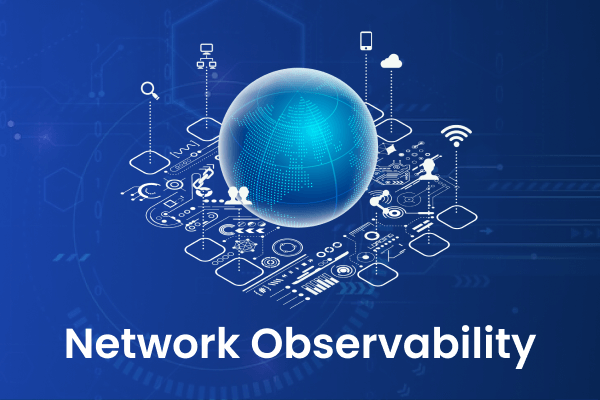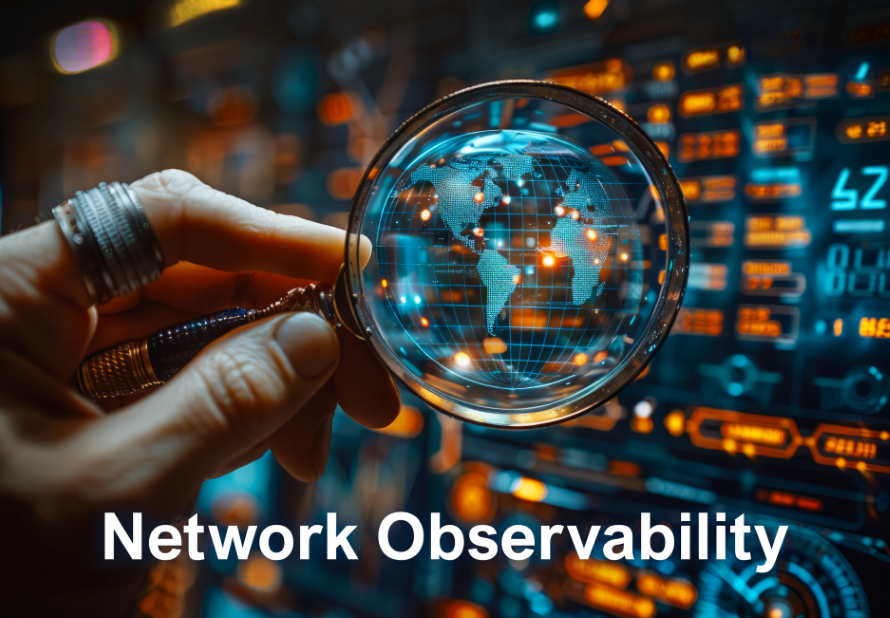What is Network Observability?
When you think about your network, chances are good you imagine servers and routers, switches, and firewalls. However, what about its internal state? What bottlenecks are occurring and where? Where is demand from users growing and where is it fading? What resources are being stretched thin? These are all elements of network observability – a critical consideration for ensuring that you can identify barriers, maximize uptime, and achieve mission-critical goals for the business.
What is Network Observability?
Network observability refers to the capability of gaining comprehensive insights into the behavior, performance, and health of a network infrastructure. It goes beyond traditional network monitoring by providing real-time visibility and a contextual understanding of network operations.
In essence, network observability involves collecting and analyzing vast amounts of telemetry data from various sources within the network, including routers, switches, firewalls, servers, and applications. This data is then processed, correlated, and visualized to provide meaningful insights into the network’s functioning.

Why do you need it?
- Proactive Issue Resolution: Traditional network monitoring often reacts to issues after they occur. Network observability, on the other hand, empowers IT organizations to proactively identify and address potential problems before they impact the end users or the overall performance of the network and the services that depend on it.
- Improved Performance and Efficiency: By continuously monitoring and analyzing network data, IT teams can optimize their network infrastructure for better performance and efficiency. This is particularly important in the context of cloud-based services and dynamic, cloud-native environments.
- Enhanced Security: Network observability plays a pivotal role in identifying security threats and vulnerabilities. By closely monitoring network activities, organizations can detect unusual patterns or behaviors that could indicate a security breach, allowing them to respond quickly and mitigate the threat.
What are the key business benefits of Network Observability?
Organizations that incorporate network observability typically experience greater operational efficiency, increased network resilience, and more consistent and predictable network performance. Some of the key business benefits of network observability include:
- Enhanced Operational Efficiency – Network observability provides more detailed real-time insights into network performance, making it easier for IT teams to quickly identify and resolve issues before they impact users on the network. Not only does this reduce downtime and minimize disruptions, but it also allows for more efficient network management by automating many of the network optimizations, corrective actions, and patches and updates typically done manually, freeing up resources to focus on other strategic initiatives.
- Scalability and Expansion Plans – By providing real-time insights into network performance and utilization, businesses can efficiently scale their network infrastructure with changes in demand for new technologies and services, growing workloads, dynamic usage patterns, or expanding operations to new branch or campus locations. Additionally, detailed and historical contextual data of traffic and usage patterns network-wide, along with potential risks and issues, makes it easier to forecast network demands and plan future capacity needs to expand and bring additional services online.
- Continuously Optimized Network Performance – Because network observability delivers a more holistic view of the entire network, businesses gain a deeper understanding of how data flows and applications interact throughout the network. continuous monitoring and optimization of network performance. By monitoring error rates, traffic patterns, and latency metrics, network administrators can identify issues, patterns, and trends and make more informed decisions, driven by data, to continuously optimize network performance. Continuously optimizing the network not only ensures predictable high performance, but also improves reliability, saves costs over time prevents more costly fixes, and has better business outcomes like increased user experience and employee productivity.
- Proactive and Automated Issue Resolution – Network observability enhances issue detection and resolution by providing real-time visibility into network behavior and comprehensive contextual data across different network devices, applications, and services. With advanced analytics and AI, network observability allows businesses to detect and address potential issues, such as bottlenecks, anomalies, and security threats, before they escalate into major problems. With improved troubleshooting and root cause analysis, correlating data across various network sources, like logs, traces, and metrics, enables faster and more accurate issue detection. Taking a proactive stance prevents costly outages and reduces the manual time spent troubleshooting, leading to more consistent and predictable network operations.
Network Observability vs Network Monitoring: A Distinctive Approach
Network monitoring and network observability may appear synonymous, yet they epitomize two distinctive approaches to network management.
Network monitoring:
Network monitoring revolves around collecting and scrutinizing metrics tied to network device health and performance. Monitoring tools track attributes such as bandwidth utilization, response times, and error rates. While offering a fundamental understanding of network health, monitoring often lacks the depth needed to untangle intricate performance intricacies.
Network observability:
Observability, however, transcends surface-level data gathering. It accentuates holistic insights into the intricate workings of a network, equipping administrators with the ability to decipher how distinct components intertwine and impact each other. This approach demands advanced techniques and technologies to capture and analyze data at a granular level, empowering the identification of performance bottlenecks, latency anomalies, and even potential security breaches.
Network Observability vs Network Visibility
Observability and visibility can seem pretty similar, but the truth is that they differ dramatically. Whereas network observability is the ability to answer questions about network conditions and performance, network visibility is the result of monitoring. It’s the data surfaced by using the tools and protocols we mentioned above. While this does imply understanding things that are happening in the network, it is not as comprehensive as observability. It is also still focused primarily on individual network assets, rather than the bigger picture, and it does not take an end-user perspective.

When should we use Network Observability?
There are many situations where you would like to use network observability. One of the reasons is to troubleshoot connectivity issues. If you have a web server that doesn’t respond to incoming requests, you can try to figure out why. To do this, you can use a packet sniffer to capture the traffic going across the network.
Once you know where the issue lies, you can fix it. Another reason to use network observability is to improve the reliability of your network. If you detect that some component isn’t working properly, you can check its logs and run tests to make sure everything is functioning correctly.
Conclusion
Network observability is a fundamental practice for ensuring the reliability, security, and efficiency of computer networks. Understanding its components and significance is vital for IT professionals and organizations seeking to maintain high-performing, resilient networks in today’s interconnected world.